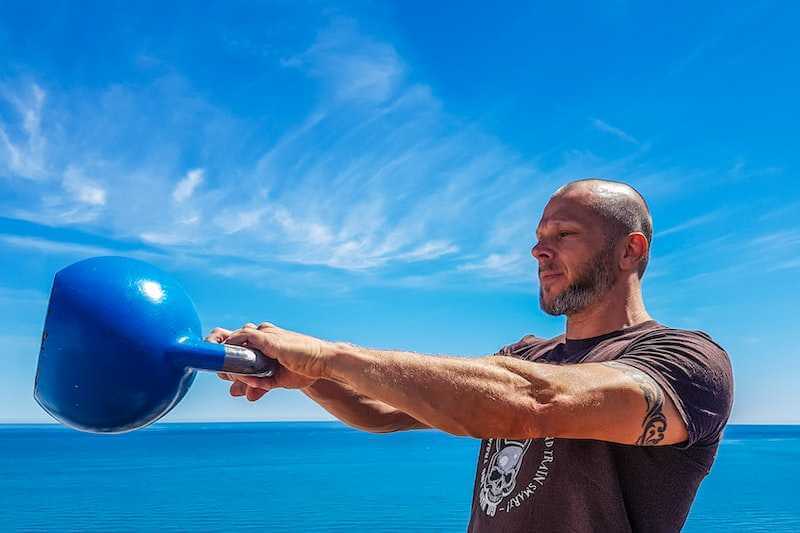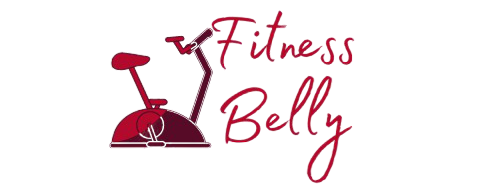It appears that almost everyone throughout the fitness industry is raving about HIIT. It has also raised many questions among fitness beginners, such as does HIIT make you lose muscle, are HIIT workouts good, etc.
Several HIIT proponents tell you that this exercise will assist you in shedding those extra pounds. Others will tell you that you could utilize it to gain muscle. So which is it: Does HIIT build muscle or burn fat?
HIIT, as opposed to weightlifting or other forms of strength training, is more effective in burning fat. However, utilizing a HIIT machine combined with resistance exercise increases muscle mass while burning fat more efficiently.
You must understand what HIIT is, how it functions, and what a high-intensity exercise entails to determine if it will help you achieve your fitness objectives. Then you’ll comprehend why these regimens are designed to help you reap HIIT cardio benefits such as losing weight and burning fat.
How Are Muscles Built?
Your muscles suffer damage when you exercise. Whenever muscle tissue is harmed, they heal by expanding and strengthening. Muscle hypertrophy is the term used to describe this process. You must both harm the muscles and allow them sufficient time to recuperate if you want to gain mass.
Weight lifting is the most effective technique to harm your muscles. Whenever you lift a huge weight, the muscle fibers get microscopic tears. You experience soreness the next day following an exercise because of these perforations.
The body mends the tears by joining adjacent cells to generate new muscle fibers. Resistance exercise results in a process termed myofibrillar hypertrophy, which is principally responsible for the growth in muscle size. It isn’t the sole method for muscle growth, though.
Sarcoplasmic hypertrophy, the second type of hypertrophy, enlarges the quantity of fluid in muscle fibers. As a result, muscles may become larger without losing strength. For maximum muscle growth, myofibrillar and sarcoplasmic hypertrophy are both required.
How Long Does HIIT Take To Produce Results?
Results won’t be seen for at least four to six weeks. Within the initial two weeks, unconditioned individuals might undergo neurological alterations. This means that while your body won’t change in appearance, the exercises will feel much better or leave you feeling more coordinated.

It will require an average of four to six weeks and occasionally upwards of six to eight weeks for physical changes, including changes in muscular mass or fat distribution, to become evident.
However, the length of time it takes to see effects varies from one individual to another depending on factors including genes and level of fitness.
What Are the Best HIIT Exercises for Muscle Building?
If you’re seeking how to get a lean body without bulking up, it’s feasible to design a HIIT exercise that aims at all significant core muscles with minimal effort. The idea behind HIIT is bigger than the actual exercise. This enables you to modify the activities to your unique goals.
Below are a few exercises you may incorporate into your HIIT practice that sufficiently excite the muscles to encourage hypertrophy.
- Lunges: Targets the quadriceps
- Boxing: Suitable for the shoulder core
- Rower: Focuses on the back and biceps
- Power clean: For the general upper body
- Burpees: For the quadriceps and shoulders
- Box jumps: Targets the quadriceps and hamstrings
- Battle ropes: Suitable for the shoulders and forearms
- Sprints and Jumping rope: Targets the quadriceps and calves
- Kettlebell Swings: Focused on the glutes, hamstrings, shoulders, and lower back
Such exercises put a greater emphasis on the concentric than the eccentric motion of the muscles. It, however, doesn’t imply that you won’t have much discomfort.
Since your muscles aren’t adapted to additional resistance, you may experience significant soreness the following day if you’re untrained or solely engage in aerobic exercises.
Don’t be concerned. It’s very natural and implies the body is functioning correctly. The muscles will quickly adjust if you maintain your regimen and are persistent in your training.
An Example of a Typical HIIT Routine
If you’re looking to develop a high-intensity workout for a menopause regimen or any other purpose, this example could be a great starting point:

| HIIT Exercise | Workout Interval | Recovery Time |
| Burpees | 20s | 10s |
| Push-ups | 30s | 10s |
| Mountain Climber | 25s | 30s |
| Kettlebell Swings | 20s | 60s |
| Plank Jack | 25s | 10s |
| High-to-low Plank | 30s | 10s |
| Jumping Squats | 30s | 30s |
| Jumping Lunge | 40s | 20s |
| Boxing Heavy Bag Drills | 30s | 30s |
| Walkout | 30s | 45s |
Is Strength Training In Combination With Cardio HIIT?
While on this point, let’s address HIIT strength training. Even though gyms promote it as High-Intensity Interval Training, strength training coupled with cardio is not HIIT. A workout that combines strength exercises with extensive periods involving cardio is beneficial but doesn’t conform to the HIIT concept.
Instead, they merely transition from strength into cardio activities. For instance, performing deadlifts for two minutes and then one minute of stationary running is a great workout but doesn’t rank as HIIT.
Is Cardio Bad for Muscle Growth?
Yes. Cardio is bad for muscle growth since it can burn muscle. This only applies if you don’t lift enough weight or add a healthy diet to your exercise routine. Cardio doesn’t necessarily cause your muscles to burn off. However, you risk burning muscle if you:
- Overdo cardio
- Exercise with “heavy impact”
- Do cardio before a weight training session
Is a HIIT Workout Plan Effective for Muscle Growth FAQs
Does HIIT Build Muscle or Burn Fat?
HIIT metabolizes fats more quickly and efficiently than it adds muscle. This is partly because it burns more calories during aerobic exercise than during strength training. With HIIT workouts, you could still increase muscle mass, but the results won’t be as impressive as they would be with resistance training.

How Long Does It Take To Build Muscle With HIIT?
Regarding how often to do HIIT workouts before seeing results, most people claim that after engaging in HIIT for one month, they may feel a transformation in their bodies. After this period, you should start observing HIIT’s subtle internal advantages, like an overall energy boost and improved athletic prowess.
How Often Should You Do HIIT When Building Muscle?
According to most specialists, HIIT exercises should be performed two to three times a week, depending on severity. HIIT exercises perform best when included in a regimen that includes other low-impact exercises, including resistance training. The recommended amount of time for HIIT or any high-intensity workout is 75 minutes.
What Happens if You Do HIIT Every day?
Although HIIT is quite effective, your body is subjected to significant strain. Adrenaline and cortisol, two stress hormones, are produced in greater amounts when the body operates at 85 to 95% of its maximum oxygen consumption capacity by your lungs, heart, and muscles.
Overworking oneself may result in a weakened immune system and make illness more likely. You run the chance of hurting yourself.
Conclusion
One of the best ways to lose weight, gain muscle, and achieve excellent overall health and well-being is HIIT combined with weights. It may require considerable time to build up to HIIT because it’s a such demanding activity.
When starting HIIT for the first time, allow the body enough time to adjust. It’s acceptable, to begin with, to do simple cardio exercises before adding weights. While being mindful of your limitations, pay attention to your physique and push yourself beyond your normal routine.
Remember always to take time off to let your body recuperate. If you don’t allow your muscles adequate time to recover and expand, you increase your chances of injury from overtraining.

I’m a triathlete and life coach, with a focus on holistic health, fitness & women’s issues.
I also write about my gastronomic adventures and my love for the outdoors.

